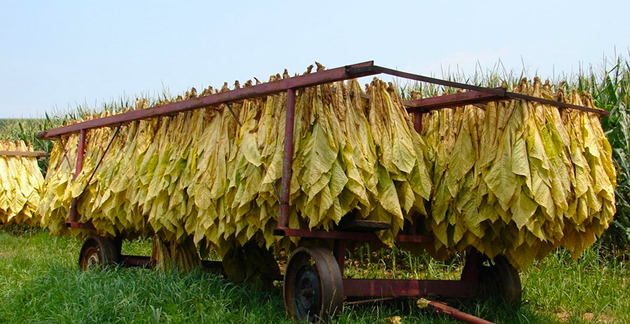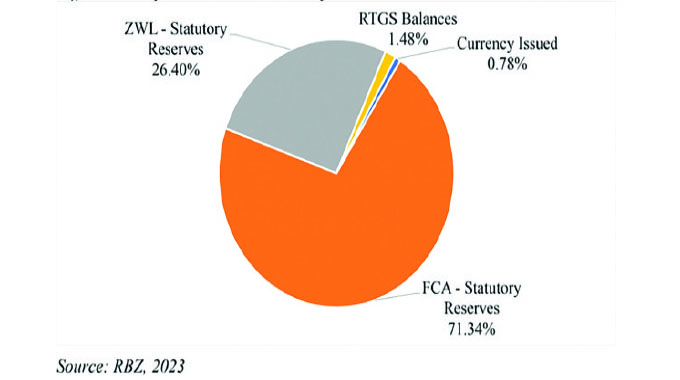Tobacco production and the environment

 Steve Mapfumo
Steve Mapfumo
In many tobacco growing countries, evidence indicates irreparable environmental damage from tobacco agriculture, particularly when associated with the deforestation necessary to increase farmland for tobacco growth and cure tobacco plants.
The June 1995 Bellagio statement on tobacco and sustainable development concluded that, in the developing world, “tobacco poses a major challenge, not just to health, but also to environmental sustainability”.
There has been a sharp increase in tobacco production in Zimbabwe over the last four years, mainly from smallholder farmers who were the beneficiaries of the fast-track land reform programme in the early 2000s.
For example, in comparison with the 2012 growing season, the number of tobacco growers registered in the 2013 growing season increased by 22 000 to 64 775. Current reports indicate that the number of registered tobacco growers for the 2014/2015 season is higher than that of the previous season.
This increased production has been happening against the backdrop of massive deforestation in the countryside, which is a cause for concern. Is the country prepared to face the inherent environmental challenges of embracing the mainstreaming of previously disadvantaged people into the tobacco sector?
The smallholder
tobacco-deforestation dilemma
When tobacco leaves are picked from the field, they have to undergo an energy-intensive drying process, also known as curing, in a specialised barn where heated air is circulated to extract moisture from the tobacco leaves.
Coal or wood is used to fuel these barns. The drying process takes about seven days to adequately cure the tobacco. Wood is less efficient than coal and therefore the curing process demands an excessive amount of firewood.
The majority of smallholder tobacco farmers rely solely on firewood to cure their tobacco. Coal and electricity, and the associated infrastructure, are beyond the reach of a large number of smallholder farmers.
Research has shown that a smallholder farmer produces up to 1 400kg of tobacco per hectare, needing seven tonnes of firewood to cure his/her crop. Cumulatively, these tobacco farmers chop about 5,3 million trees each year to support their production in Zimbabwe. It is reported that in 2011, an estimated 46 000 hectares of forest had been cleared, and about 1,38 million cubic metres of firewood burnt to cure part of a 127 million kg tobacco output.
Access to land through the land reform programme has opened access to other resources for the beneficiaries; for instance, the newly resettled farmers now have indigenous forests at their disposal. Unfortunately, indigenous trees take a very long time to grow to sizes that can then be used to cure tobacco.
Efforts to curb deforestation
The Zimbabwean Environmental Management Agency (EMA) is a statutory body tasked with the management of the environmental resources of the country. EMA has already started to take action against people who are caught cutting down trees illegally, including those doing so for the purpose of curing tobacco.
The indiscriminate and illegal cutting down of trees is a criminal offence which attracts a penalty of up to US$ 300 per tree. The Government of Zimbabwe implemented a draft statutory instrument that requires tobacco farmers to have a woodlot from which they would draw firewood to use for curing their crop.
The Tobacco Industry and Marketing Board (TIMB) has since started to supply registered growers with eucalyptus seeds under this initiative. Growing of the exotic trees is advantageous in that they are fast growing and renewable. However, the trees that are being destroyed are not being matched by these initiatives.
One of the biggest tobacco companies in Zimbabwe introduced what is called a rocket barn in an effort to contribute towards reducing deforestation associated with tobacco curing. A rocket barn decreases wood use while improving the amount and quality of tobacco cured, since it is 50 percent more efficient than the conventional barn, thus creating benefits both to the producer and the environment. In addition, the rocket barn is easy and affordable to build or to retrofit an already existing conventional barn.
The rocket barn makes use of timber offcuts that can be obtained from commercial forest concerns. This goes a long way to spare huge and mature indigenous trees from being cut for the purposes of curing tobacco. The trouble, though is, how many of our tobacco farmers are using this brilliant method.
Some local tobacco contracting firms have also started to help their farmers to access coal in a bid to alleviate the potential disaster which could be caused by continued deforestation. It is not common knowledge among our farmers that 2kg of coal are needed for each kilogramme of cured tobacco leaf and this can be improved to as low as 1,2kg of coal per kg of cured leaf.
This improvement is possible if there is implementation of other measures such as harvesting only ripe tobacco (which requires a shorter curing period), and having well-insulated barn walls, roofs and floors. Farmers could also switch to growing burley tobacco which does not have the high fuel demands associated with flue-cured tobacco.
Food for thought
The majority of smallholder tobacco producers are beneficiaries of the fast-track land reform programme that was started in the early 2000s but do not have adequate resources to produce the crop as sustainably as possible. Thus, the country is experiencing an unprecedented level of deforestation associated with tobacco production. The level of deforestation will, in the long run, impact on the very survival of the flourishing sector.
The pressure to produce the crop sustainably has been viewed by the tobacco growers as an indictment on their emergence from poverty, given their previous exclusion from the sector. The Government has stepped up its initiatives in order to stem the scourge of deforestation associated with tobacco farming.
However, these initiatives fall far too short of the need to address the problem at hand. Thus, tobacco production itself has been seen to pose a dilemma for development, since it brings a wide range of benefits that have to be weighed against its damage to the environment.
Steve Mapfumo is the Head of Operations at the Zanu-PF Youth League and Lasch Enterprises P/L Joint Venture. The Joint Venture Management can be contacted on04-668773 or [email protected] <mailto:[email protected]> . Website: www.laschjv.co.zw <http://www.laschjv.co.zw>








Comments